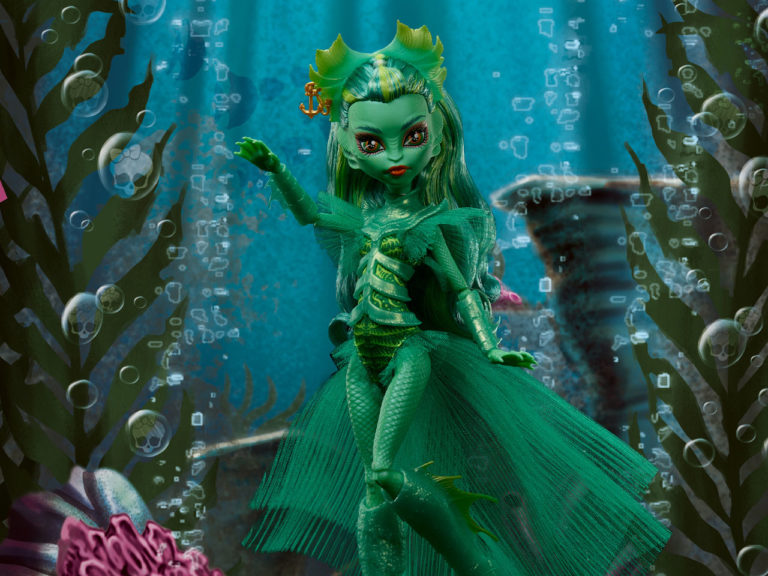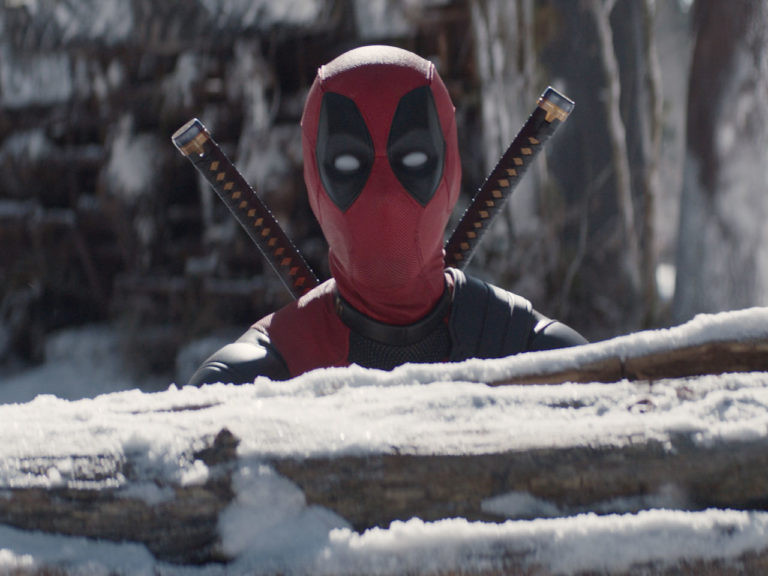

Here’s the thing about The Man of Steel: it’s good. Oftentimes, it’s very good. Brian Michael Bendis’ work with Superman is enjoyable, and while he’s made quite a few changes to the status quo (some of which are still a mystery, even as of this week), he seems to have a good handle on the voice of the character. The way he has Superman interact with both his friends and his enemies has a certain buoyant charm to it, somewhat evocative of a Silver Age story in Modern Age trappings.
Even his new villain, Rogol Zaar, is much more complex and interesting than at first glance. He’s a big, scary space monster, sure, but seeing his role in the story unfold is actually pretty engaging. As a character he may not have much depth, at least not yet, but his motivations and actions carry a certain weight. With ties to the destruction of Krypton, he’s a villain that could have easily been one-note and one-dimensional, but Bendis manages to flesh out his story in an engaging manner: rather than simply being a world conqueror or mindless baddie who wanted to cause damage and destruction, Zaar has what he sees as a justifiable reason for wanting to see Krypton destroyed. He even calls on a galactic tribunal to aid in his goals as opposed to just destroying the planet on a whim. This plot could have been a cringe-inducing attempt to yet again retcon a piece of Superman’s history, but Bendis is approaching it with a surprisingly engaging and even hand.
So, yes, The Man of Steel is good. But that’s just it: it’s good, not great. Had this been “just another Superman story” that would have been enough. More than enough. With the amount of fanfare and anticipation leading up to this series, though, along with Bendis’ shocking move from Marvel to DC, “good” is almost disappointing. Especially when you consider how Dan Jurgens, Peter Tomasi, and Patrick Gleason were writing some of the best Superman stories of the past decade, Bendis writing a good Superman story isn’t enough to differentiate it. I say this without a shred of bitterness, contempt, or sarcasm: I like Bendis’ Superman, but I don’t love it.
At least not yet. He’s just starting and I’m excited to see where he goes, especially once he finds his groove with the character. This miniseries is a nice debut on its own, and I’m enjoying reading it. While it may share a name with John Byrne’s landmark 1986 miniseries, there aren’t an awful lot of similarities. Honestly, I think that’s a good thing: rather than trying to force a complete reboot of a character (Byrne’s, after all, came off of Crisis on Infinite Earths, so he had a broader palette to play with), Bendis is aiming instead for new storytelling opportunities. Whether those play out will be seen, of course, but Bendis isn’t reinventing the wheel here, he’s just rolling it in a different direction.
At this point, we’re halfway through the weekly series with issue 3. Of the available chapters, it feels like less happens here than what came before it, but what does happen has far greater weight. Rogol Zaar makes his way to Earth, the Fortress of Solitude in particular, and commits a heinous act that was genuinely shocking. Besides being instrumental in the destruction of Krypton, Zaar’s actions in the Fortress take Superman’s first notable failure and add an additional layer of tragedy. I won’t outright spoil what happens, of course, but if you read between the lines you can probably tell what he does.
Perhaps the most surprising thing about the structure of this issue is the fact that it seems to lead into Bendis’ contribution to Action Comics #1000. It may be negligible to some, but I kind of like that his story there wasn’t divorced from his larger narrative. If you’ll recall, Superman and Supergirl fought Rogol Zaar on the streets of Metropolis, and Action 1000 ended with Clark being subdued by the villain. Here, Zaar is waiting to confront the duo, which will no doubt lead into that very battle. It could have been a standalone story that existed solely to pique interest in the miniseries, but I really appreciate that it’s looking like it will all fit together. The more consistency the better, I say.
While the narrative and structure has little in common with the 1986 Man of Steel miniseries, there are some fun parallels. Like the previous series (which, to be frank, still stands as my favorite Superman origin ever, and one of my favorite Superman stories besides), Batman has a role to play. Since this takes place in current continuity, Bruce and Clark have long been friends, so there’s no retelling of their first case together. That’s a wise move from Bendis, as we don’t need to see that yet again. I’d much rather read bout these guys in their prime, working with each other after a decades-long friendship. The scene may be brief, but that’s pretty much what we get.

It is played a bit for laughs, but the circumstances make sense: there have been a rash of fires, possibly arson-related, and the Metropolis fire and police departments are at a loss. Firefly is a suspect, but there’s not enough proof, so Superman calls in the World’s Greatest Detective to investigate. The scene is brief, and it’s lacking a resolution, but Bendis has some pretty good dialogue throughout. It may be premature to say he absolutely nails the dynamic between Bats and Supes, but like the series itself, this is a good start.

Bendis has been blessed with a stable of amazing artists on this series, and this issue is no different. Ryan Sook has a great style that just fits Superman. It’s a nice blend between the more realistic style of Ivan Reis, who penciled the first issue, and the clean, classic aesthetic of Doc Shaner, who penciled part of the previous issue. Shaner is far and away my favorite, but that shouldn’t be taken as a knock toward anybody else. These are all incredibly high-caliber artists, and this series looks phenomenal. Sook in particular makes great use of double-page spreads, especially late in the issue, and Alex Sinclair’s colors alternate seamlessly from bright and colorful to heavy and moody throughout.
Like the previous two issues, Jason Fabok pencils a brief interlude with Lois, Clark, and Jon. The details here are still hazy, with a mysterious craft piloted by an even more mysterious being suddenly appearing in front of the Kents, though a full explanation will no doubt come in issue 6 when Fabok takes the reins. Having Fabok as the constant with this flashback is effective, and helps prevent the shift between artists from being jarring. There’s not an awful lot to the scene, but it’s Fabok. You know it’s good.
Taken on its own, The Man of Steel works well. The main problem with it is that, after all the hype and anticipation, it’s not any better than the Superman stories we were already getting. It’s almost like Bendis is playing it safe, which is fine, but it’s a little too safe to be truly memorable. Good Superman can turn into great Superman, though, so I’ll take that over bad Superman.
Oh, and there’s also Jimmy Olsen.

The world needs more Jimmy Olsen.
Recommended if:
- You’re curious to see what Bendis does with Superman.
- You take all the Batman you can get.
- Jimmy Olsen, guys.
Overall: A good chapter in a good series that hasn’t quite achieved greatness. It looks amazing and the narrative flows really well, with Bendis getting the characters’ voices down pretty pat. I just wish there was a little more to this than there actually is, especially after months and months of anticipation. If nothing else, I’m glad that Bendis isn’t trying to completely reinvent Superman from the ground up, it just feels like he’s playing it too safe. Still, it’s an enjoyable read, I’m liking the series even if I don’t love it, and there’s a fun scene with Batman to boot.
SCORE: 7/10


